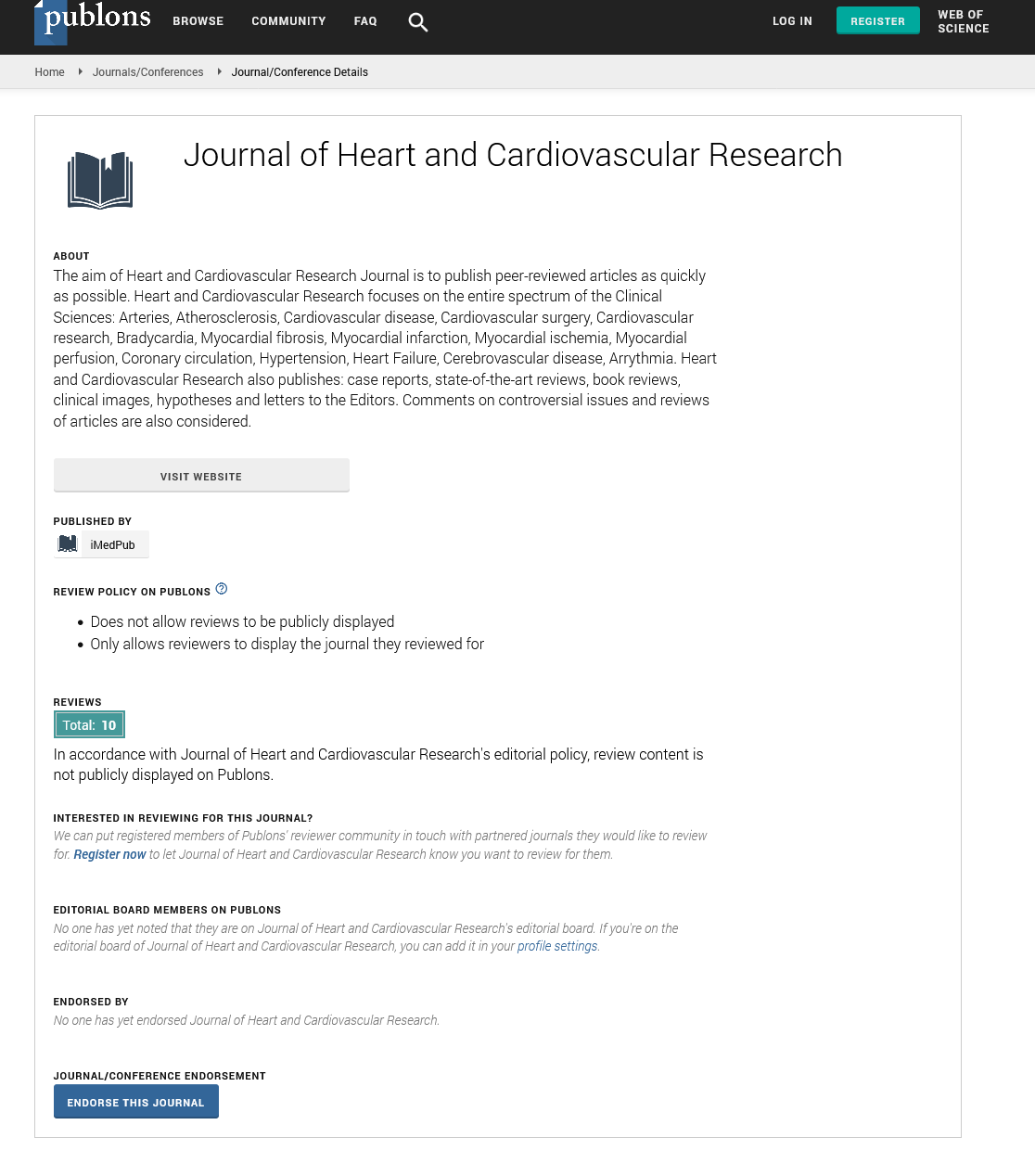ISSN : ISSN: 2576-1455
Journal of Heart and Cardiovascular Research
Abstract
A Case of Left Ventricular Pseudoaneurysm.
Introduction:
Pseudoaneurysm of the left ventricle is a rare devastating complication of acute myocardial infarction. It is caused by contained myocardial free wall rupture within the pericardium. We were confronted with a case of thrombus-containing ventricular pseudoaneurysm which was incidentally discovered several months after an attack of acute chest pain. The diagnosis was obtained using transthoracic echocardiography (TTE) and confirmed using cardiac magnetic resonance imaging (CMR). Unfortunately, the patient passed away before surgical intervention. This case demonstrates the importance of prompt diagnosis and management of such lethal complication. Keywords: pseudoaneurysm; pericardium; ventriculography; coronary artery
Objectives:
Left ventricular (LV) pseudoaneurysm is a catastrophic complication of acute myocardial infarction that is reported in less than 0.1% of patients. It is caused by myocardial rupture contained within the pericardium and is characterized by the absence of true myocardial tissue in its wall unlike, a true aneurysm which involves the full myocardial wall thickness. The non-specific clinical presentation of such condition is what makes its diagnosis a clinical challenge . Early diagnosis is mandatory using noninvasive modalities such as TTE and CMR or less commonly used nowadays invasive modalities such as coronary arteriography and left ventriculography. Due its high liability for fatal rupture urgent surgical intervention is of paramount importance in management of this pathology.
Results:
Our case represents the dilemma of anticoagulation in patients with cardiac pseudoaneurysm, the decision should weigh the benefit of reduced thromboembolism against the risk of bleeding or pseudoaneurysm rupture. Although triple therapy was initiated, that did not prevent the patient from developing a massive stroke and hence ending his life.
Conclusions: Cardiac pseudoaneurysm is a devastating disease that rarely complicates myocardial infarctions. High clinical suspicion and the use of non-invasive imaging techniques allow early diagnosis thus reduce the risk of its fatal complications.
Author(s): Mahmoud Abdelnaby1*, Abdallah Almaghraby1, Yehia Saleh1, Basma Hammad2, Ashraf El-Amin1, Sara El-Fawal3 and Mohamed Sanhoury1
Abstract | PDF
Share This Article
Google Scholar citation report
Citations : 34
Journal of Heart and Cardiovascular Research received 34 citations as per Google Scholar report
Journal of Heart and Cardiovascular Research peer review process verified at publons
Abstracted/Indexed in
- Google Scholar
- Sherpa Romeo
- China National Knowledge Infrastructure (CNKI)
- Publons
Open Access Journals
- Aquaculture & Veterinary Science
- Chemistry & Chemical Sciences
- Clinical Sciences
- Engineering
- General Science
- Genetics & Molecular Biology
- Health Care & Nursing
- Immunology & Microbiology
- Materials Science
- Mathematics & Physics
- Medical Sciences
- Neurology & Psychiatry
- Oncology & Cancer Science
- Pharmaceutical Sciences
